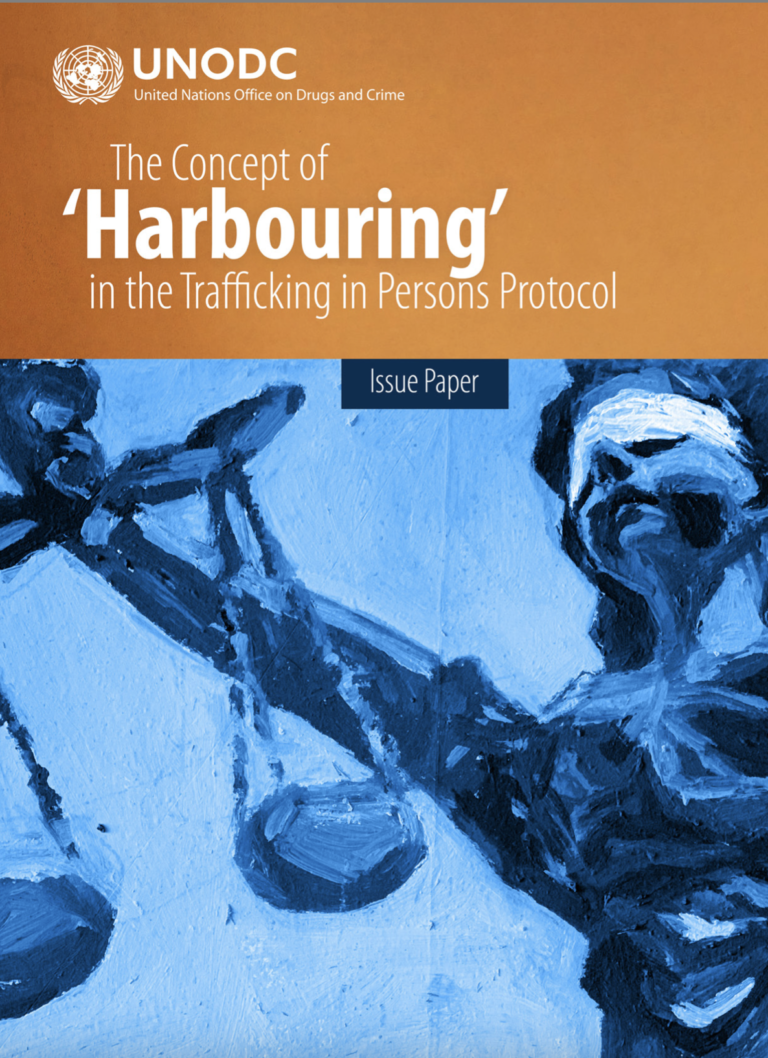This Issue Paper examines the concept of ‘harbouring’ in the United Nations Protocol to Prevent, Suppress and Punish Trafficking in Persons, Especially Women and Children, supplementing the United Nations Convention against Transnational Organized Crime (‘Trafficking in Persons Protocol’). Article 3(a) of the Protocol defines trafficking as constituting three elements: an act element, a means element (by which the act is achieved), and a purpose element of exploitation. Where any of the stipulated means are present (or where the trafficked person is a child) any consent of a victim of trafficking to their exploitation is irrelevant.
While the Trafficking in Persons Protocol enjoys wide acceptance by the international community, uncertainty over certain aspects of the definition of trafficking persists. Clarity regarding what is, and equally what is not, trafficking is significant for a range of reasons. Characterising conduct as ‘trafficking’ has implications for who may be prosecuted as a trafficker, who is identified as a victim, and for States’ broader understanding of the nature and extent of trafficking in their jurisdictions. The importance of a clear international definition of trafficking in persons is recognised by States Parties to the Protocol.
Analysis of the concept of ‘harbouring’ is important for a number of reasons, not least because there is little guidance in the Protocol or interpretative materials concerning its meaning and application. As this Paper shows, this lack of clarity has implications for how harbouring is understood, particularly at the national level and across different languages. In this context, this Paper examines how and to what extent the meaning of ‘harbouring’ differs across languages, as well as its relationship with the other act elements in the trafficking definition. It further explores questions regarding the scope of ‘harbouring’, including whether it requires concealment or simply accommodation of victims, whether a victim must be harboured for a minimum period of time, and whether there is a requirement of ‘substantiveness’ to a place of harbouring. This paper also addresses the role of ‘harbouring’ in obviating the need for movement as a component of trafficking.

